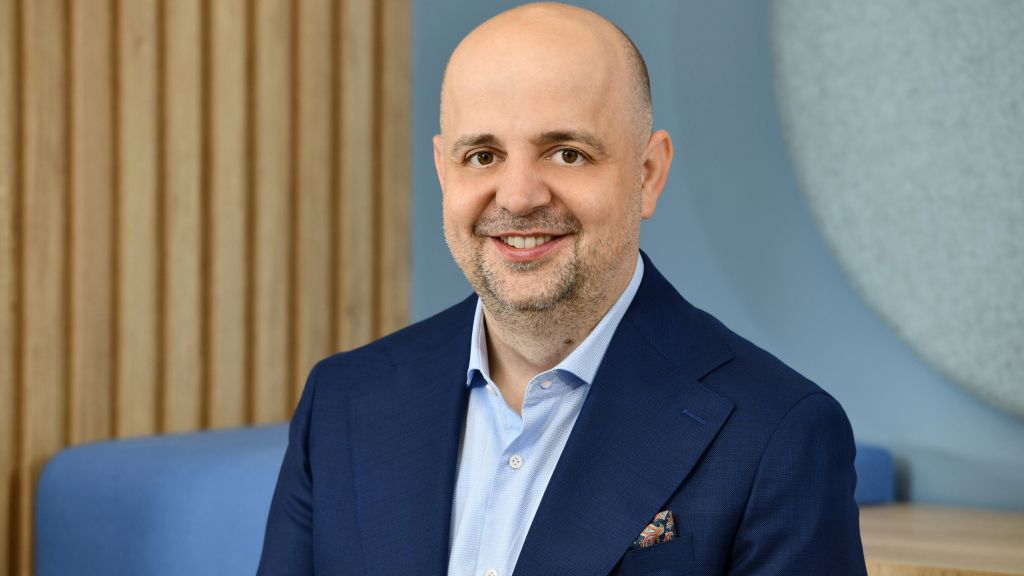2013 Pharmaceutical outlook
The promising perspectives that are envisaged for the Romanian economy (i.e. real GDP growth of over 3% estimated by BMI in the following five years and lowering unemployment) could translate into a sound future for the pharmaceutical market, with forecasted annual sales of over USD 4 billion until 2018 that keep the domestic sector the second runner-up of the below CSE cluster.
In spite of the positive growth story that is to be written over the long-term, the local pharmaceutical sector still struggles with punitive taxes, pricing controls and a lack of funding by the state for reimbursing patients, in line with other Pharmaceutical industries that face similar challenges.
Namely, Hungary is confronting downward pricing pressures and cuts in reimbursement levels, whilst the Czech Republic’s main risks comprise pricing pressure, poor access to the market and increasing generic substitution. Bulgaria’s Pharma sector deals with downward pressure on the prices of drugs and political uncertainty, whereas Serbia’s pharmaceutical market, as one of the least developed in Europe, poses serious problems, such as limited financial resources, price cuts, inconsistent and inefficient pricing mechanism and reimbursement regime leading to frequent drug shortages.
Despite being the seven-country cluster’s stars, Poland and Turkey have their own Achilles’ heel, meaning a heavily regulated market, fixed retail and wholesale margins, weak patent and registration laws (Poland) and relatively low per capita drug spending, patenting law below international standards and low healthcare expenditure (Turkey).
Market structure – Prescription vs. OTC / Patented vs. Generic
With regards to drug market structure, in 2013, Romania has maintained the tendency that has been observed over the past three years, with around 82% pertaining to prescription drug sales and the rest to the OTC (over-the-counter) market. Prescription medicines still capture most of the total sales of pharmaceuticals, with lifestyle and chronic diseases emerging as key causes of mortality and therefore influencing the therapeutic distribution. Whilst over the long-term, in a context of proper financial support, sales of prescribed drugs are set to enhance, as access to higher-value innovative products generates growth, on the short term OTC market may be on an upward slope due to non-exposure to claw-back tax. Similar structure is describing the markets in the Czech Republic, Hungary and Bulgaria, explained by factors such as:
? Increased availability of innovative therapies and improved patient knowledge of available medicines (in Czech Republic);
? Low prescription drug prices, driven by government encouragement of generic medicine and price pressures, mingled with patent expirations (Hungary);
? The country’s demography and epidemiology that determine a great demand for prescription drugs (Bulgaria).
Both Turkey and Serbia are slightly different from Romania, the Czech Republic, Hungary and Bulgaria in pharmaceutical market structure, with main discrepancies being generated by: i) economic pressures on patients’ expenses and expected healthcare modernisation (Serbia) and ii) improvements in healthcare insurance coverage levels (Turkey).
Poland stands out from the cluster, with approximately 29% of the total 2013 sales covered by OTC medicines, based on consumers drifting apart from visits to hospitals and doctors towards self-medication.
As for the comparison between patented and generic drugs, the similarities across the seven countries start to dissolve. Despite long time delays between updates to its reimbursement list, Romania’s 2013 patented drugs have the largest share of total prescription sales amongst its peers under analysis. This is mainly due to the consumers’ preference for innovative drugs for treatment of serious illness, on one hand, and strict price control, claw-back taxes and delays in the reimbursement regime leading to declining spending on generics, on the other. Currently dominating the market in volume terms, generics are forecasted to increase their proportion in total prescription sales until 2018, due to lower additional charges resulted from the introduction of co-payments for drugs and other legislative measures that will favour lower-price products.
Bulgaria is the market most similar to Romania regarding the Patented / Generics segregation recorded in 2013. Domination of patented medicines in value terms has been historically driven by inclusion of new products on the reimbursement list and expansion of general practitioners’ prescribing influence and is estimated to continue as a result of the introduction of new positive drug list, of which several have already been available on other European markets.
Hungary, the Czech Republic and Turkey present some resemblances in respect of the two segments of prescription drugs. Although Hungary’s patented drug sales have decreased over the past two years, due to price reductions and lower reimbursement levels, estimates show that over the long term greater access to innovative drugs leading to higher growth will be reached, provided the fiscal outlook improves. In the Czech Republic, generic products dominate local production as part of the government’s plan to reduce healthcare costs and are expected to rise over the long term, as expiries of major patented drugs until 2018 are bound to happen. Turkey’s patented drugs segment shows rosy perspectives, due to increasing demand for advanced medicines launch of Western-developed patented drugs. However, in the following five years, the generic drugs segment is set to outpace the patented medicines market in terms of growth, as pricing and government’s prescribing signals will determine doctors to opt for cheaper solutions.
Conversely, in Polish and Serbian markets, generic medicines capture more than 50% of total prescription sales. If Poland’s consumers prefer generics due to lowprice treatments, historically poor intellectual property protection and government policies in favour of generics for reimbursable drugs, Serbia’s preference for generics is mainly driven by reimbursement regime too financially constrained and low consumer purchasing power. Estimates over the 2014 – 2018 period indicate that the market structure will remain the same for both economies, mostly sustained by: i) the highly pricesensitive nature of the pharmaceutical sector in Serbia and ii) the government’s efforts to reduce pharmaceutical spending and introduce more price cuts.
Competitive landscape
No significant changes have occurred in 2013 with regards to the fragmented pharmaceutical sector in Romania. Currently undergoing consolidation, the market is supplied by 330 manufacturers, 450 wholesalers and around 7,000 pharmacy units. With labour and other costs below the Western Europe average, the local manufacturing base accounts for approximately 25% of total pharmaceutical market, being dominated by foreign companies (e.g. Roche, Sanofi, Novartis, Servier and Pfizer). The Romanian pharmaceutical wholesale is controlled by domestic players, with Mediplus, Farmexim, Polisano and Fildas covering approximately 65% of sales in 2013. The largest chains of pharmacies, linked to top wholesalers (Catena to Fildas Trading, Sensiblu to Mediplus, Help Net to Farmexim, Gedeon Farmacia to Richter Gedeon) total around 1,000 outlets, representing 14% of the market in 2013.
One of the few pharmaceutical markets of the peripheral European Union to experience growth in 2013, Bulgaria continues to be dominated by domestic generic companies which own a considerable manufacturing base and strong sales force. As well as Romania, Bulgaria is currently undergoing consolidation, with a small number of large players, but differs in terms of multinationals’ direct presence, which is still limited. Similarly to Romania, market saturation in terms of number of pharmacies has led to legislative measures being taken, namely ownership of pharmacies limited to four per person or company.
As one of the leading pharmaceutical manufacturers in Eastern Europe, Hungary’s first contrast to Romania’s market is the industry’s high concentration, with the six largest companies accounting for approximately 90% of total production. The most significant players are local-based generic drug Gedeon Richter, Egis (owned by Servier) and vaccine producer Omnivest. Wholesale is also highly concentrated, with Hungaropharma (estimated 34% market share) and Pharmafontana as most significant players. Retail is facing restrictions, as wholesalers, pharmaceutical companies and offshore investors are prohibited from owning new pharmacies and the stake owned by pharmacists at existing pharmacies must reach 51% by January 2017. Similar to Romania, pharmacists cannot own more than four branches of one pharmacy and at least 4,000 people will have to be served by each new pharmacy in towns with populations exceeding 50,000.
As for the other four members of the cluster, the following can be summed up:
? In Turkey, in 2013 there were operating 49 manufacturers (14 of which owned by multinationals such as Sanofi, Baxter, Amgen, Bayer, GSK, Novartis, Pfizer and Roche), 300 wholesalers (of which the most significant are Hedef Alliance and Selçuk Ecza Deposu, with 70% market share) and around 24,000 retailers (2010);
? Poland’s pharmaceutical industry is split into consolidated manufacturing (the largest market shares in manufacturing being owned by GSK, Pliva, Roche, Bristol-Myers Squibb, Novartis and Pfizer and Teva / IVA) and wholesale (350 distributors) and a very fragmented retail segment (numbering 13,443 pharmacies in 2009);
? In 2013, the Czech Republic had 81 local drug manufacturers (amongst which the most visible are Zentiva / Sanofi, Pliva – Lachema, Hexana / Novartis, Bristol – Myers Squibb and GSK), 221 wholesalers and approximately 2,700 pharmacy units (in 2012);
? Serbia’s domestic production is relatively small, with 15 key manufacturers focused on basic medicines. Most multinationals (Pfizer, MSD, Bristol-Myers Squibb, Eli Lilly, Abbott, Jansen – Cilag, Schering – Plough and Wyeth) are present on the market through imports, licenses or marketing agreements with local companies.





























